Talking about “So cool Japan” Exhibition
The power of Japanese second-hand clothes
2G, the store in Shibuya PARCO where POGGY works as a fashion director. In this new place called 2G, three different genres are gathered to express their own culture from Tokyo to the world. These are NANZUKA’s gallery, MEDICOM TOY’s art toys and of course, fashion. Here, an exhibition called So cool Japan will start from June 26th (Friday). For this exhibition, POGGY has collaborated with people like c30’s Gonmori, who has also appeared in a dialogue with him before on OR NOT, as well as weber, a second-hand clothes store who has been setting up pop-up stores in various places, in an attempt to once again shine some light on the potential of Japan’s second hand clothing. This time, we had POGGY, c30’s Gonmori, as well as weber’s Ikeda and Hatanaka gather on zoom to tell us their view on the So cool Japan exhibition, showing us a selection of the items that you’ll be able to see at the venue.
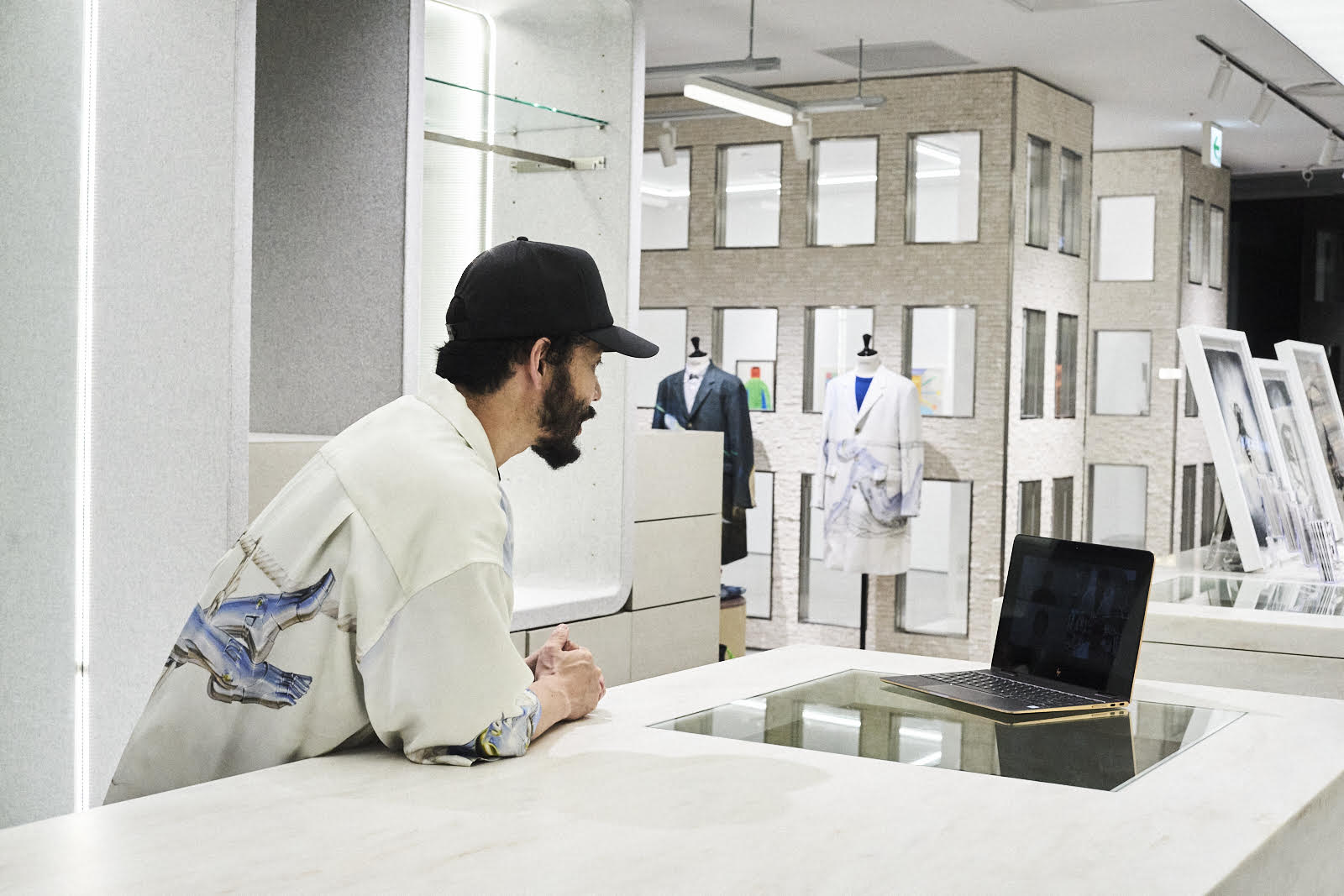
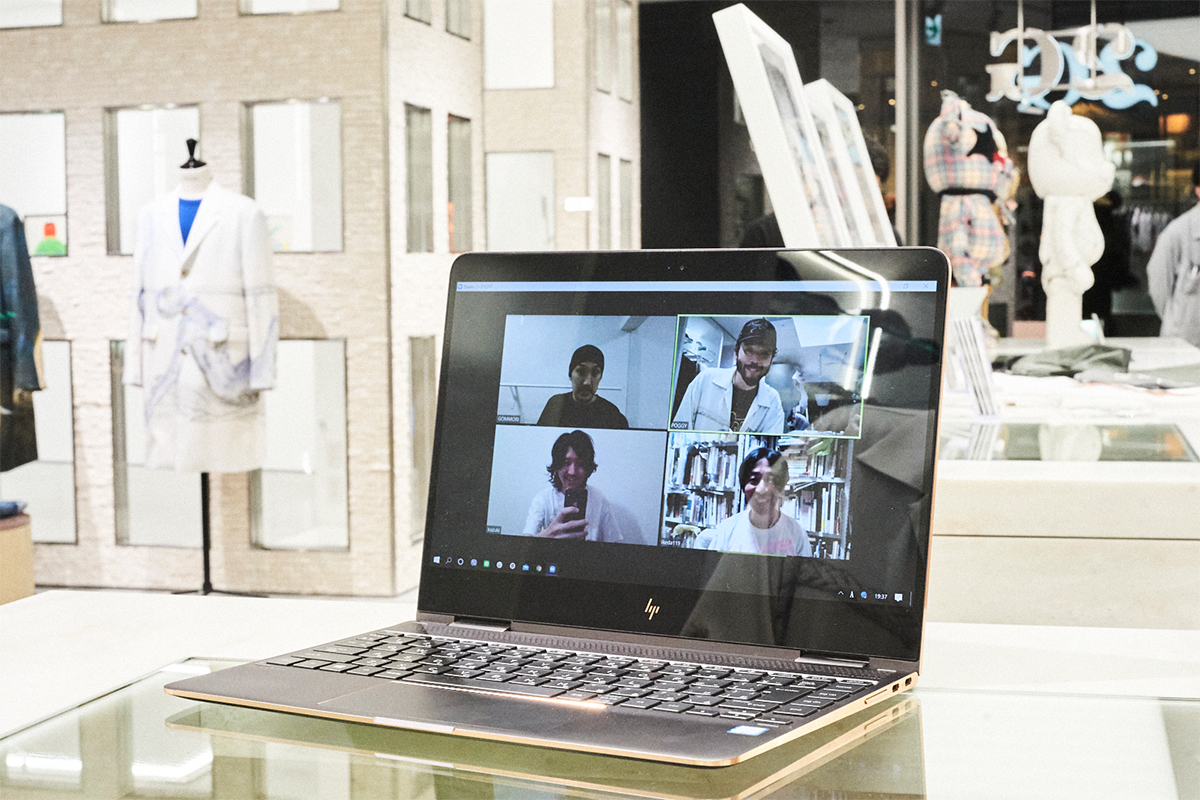
--- Firstly, could you tell us how this So cool Japan exhibition came to be organized?
POGGY: “It all started this January with c30’s Gonmori, who told me he was planning on doing a collaboration with weber to do a pop-up something, and then he asked me whether it was possible to do it at 2G. Of course, immediately I told him I was interested. That’s how the ball got rolling. I’ve known weber’s Mr. Hatanaka for about seven, eight years by now, but I didn’t actually really know what he was doing. I had never actually seen any of their stores, so when they were doing a pop-ip store at BEAMS T I went to visit and met Mr. Ikeda there, who told me that he was actually doing the project with Hatanaka, which was the first time I actually learned about that.”
Ikeda: “Yes, that time I basically contacted you out of nowhere, didn’t I?”
--- Mr. Gonmori, why did you consider doing a pop-up store together with the people at weber?
Gonmori: “I’ve been buying clothes at weber from the very beginning and was always impressed by their great fashion sense. So we became friends, and because I’m also a person who has somewhat peculiar tastes in second-hand clothes, I felt like some interesting chemical reaction might occur if we did something together, that’s basically all.”
--- For this So cool Japan collection, I hear your idea has been to select some of the finest second-hand clothes based on the common theme of ‘Japan’.
Gonmori: “What I wanted to do was to get people to know about the history street fashion created in Japan in the nineties, as well as to get people from Japan as well as abroad to value these items more. I feel a similar wave is coming just like it was back then. There’s a lot of people from all over the world paying attention to Japanese street fashion and second-hand clothes are being revalued as part of the archive, gaining great popularity. But I feel all of that is just surface-level popularity, and the importance of the culture behind the items hasn’t been looked into thoroughly yet. By introducing some items from this culture and period, which back then was being spread by people like Hiroshi Fujiwara, Kan Takagi, JONIO, NIGO, SK8THING and others, which found its origin in the magazine LAST ORGY that was being published at the time, I want to share their passion to the whole world.”
POGGY: “When I met everyone here before this COVID-19 thing started, I got the feeling that the people at weber mostly went for a cool vibe, while also being interested in so-called B-side items. I thought it would be interesting if we could express those elements as well.”
Ikeda: “When we decided to base this exhibition on ‘Japan’, we realized it wouldn’t be interesting if all items included were too close to each other in style. Gonmori is known for his knowledge of the so-called Urahara Culture, so I thought it would be interesting for me to find items outside of that area, items that I thought hadn’t gained their place in the spotlight yet. It was just a vague idea at that point. But after looking for a while, I came across a lot of items that I thought would be nice, which is basically how this selection was born. Hatanaka, do you have any additions?”
Hatanaka: “No, that’s actually exactly what I wanted to say!”
Everyone laughs.
--- Are there any other materials for sale other than the items bent sent to 2G right now?
POGGY: “Yes, there’s some as well. We have over 300 items for this exhibition in total, of which this is only a tiny sliver. For three days, we’ll have several shelves at 2G set aside especially for T-shirts available only for sale at the shop front, and after that we’ll change up our selection and sell some items online for our customers who can’t visit the store.”
Hatanaka: “We have all sorts of items here. The theme of course this time is Japan, but some items here are just one step away from being variety goods, so we aimed to not go too far, but we also tried to not have too many items that are kind of show-offy; it was pretty hard to get the perfect balance between all of these things. Mr. Gonmori collected all sorts of Urahara items for us, which led to a lot of the items being from the nineties which was interesting. That’s why I started looking for the culture I experienced myself in the nineties and tried to draw from my own memory; I collected these items while talking together with Mr. Ikeda a lot. As a result, we also have a lot of items connected to things like music and art, as well as items that probably no one has really tried to lay their hands on before; it’s become a kind of interesting and edgy line-up.”
POGGY: “For example, at c30 there’s a lot of older items related to Futura and Stash, which they were very early to lay their hands on, surprising even Futura himself. That’s not because he was aiming for the prices to rise; it was purely because he liked the items; another example are the photo T-shirts by Bruce Weber which have been rising these years, which weren’t exactly made popular by intent by weber, but them zeroing in on these items definitely had an impact. The T-shirts by FOTOFOLIO, for example, were completely normal items when they were first sold in the nineties, only sold at specific brand stores. The shirts by Avedon are a good example. When I’d just entered United Arrows, I remember folding them up all the time!”
--- So at the time, these weren’t rare or anything at all?
POGGY: “No, they were on sale like any other item.”
Hatanaka: “Yes, that’s really just what it was like.”
--- I feel being able to change the way people view the items based on the way you arrange them is also an interesting element of second-hand clothes.
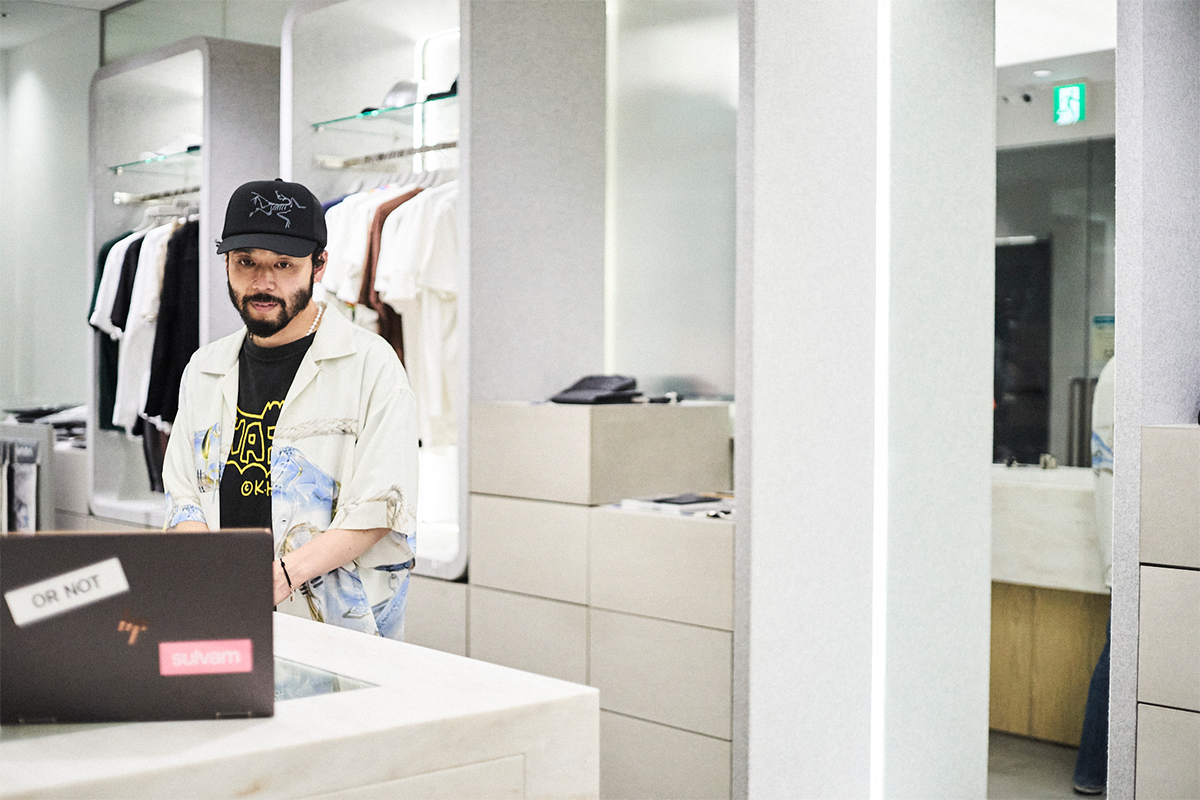
POGGY: “There’s a lot going on now, the COVID-19 situation, as well as the situation with the demonstrations aimed at ridding the world of racism. While all of this is going on, Round Two, the store in LA owned by Sean Wotherspoon was also attacked by looters. That in itself was a real shock to me, but it was followed by assaults on New York’s KITH and FLIGHT CLUB as well, with people using guns; it seems to have been quite the dangerous situation. Virgil (Abloh) posted a comment on Instagram as well regarding the assault on Round Two, saying things like ‘street fashion is over’, ‘perhaps the way we did things was wrong’; I feel taking Round Two as an example to comment on was maybe not the best choice, but I have to admit the things that Virgil said did resonate with me as well. Street fashion is kind of like creating a story together with your buddies, so things like the story behind a single T-shirt design or the culture are very important for the whole. For lovers of sneakers and streetwear, these shops ought to be places to protect, so assaulting these kinds of places almost makes it seem like you’re only looking at clothing and sneakers as mere ‘objects’, that’s kind of what it felt like to me. And I felt very sad about that. Of course, the problem goes deeper than this, but one of the things we as people in the fashion business can do is to spread the word through items from earlier times; I think while that’s maybe a common thing to do in this situation, it’s also a very important thing to do.”
--- For a culture to exist, education and the ideas that prior people in the field can tell us are important elements as well.
POGGY: “That’s why it’s important not just to show off the items as themselves, but also to actually explain the background they’re coming from, which is another very interesting point.”
--- Are you digging around for these kinds of items in your daily lives as well?
Hatanaka: “As for the items we have here, almost all of them were gathered especially for this exhibition. Usually I decide for myself which theme I use to collect items, so one time I collected Bruce Weber items, another time because I like movies so we collect movie items, that’s usually how we do things. I also try to include several unordinary items into the line-up of which I’m not really sure whether they will sell of not, but that I just enjoy personally. Usually I don’t really look that much at the era in which it was made. Second-hand clothing has kind of a set idea of ‘Vintage should be from this era’, in which case these days the nineties are popular, but for me items from the zeroes and the tens can be just as interesting and usable if only their atmosphere fits. That’s kind of the way I collect. Some of these items I’ve had laying around for a while waiting for the right moment to put them out, so this time I’ve brought some of those as well.”
POGGY: “There’s so many interesting things to be found out there!”
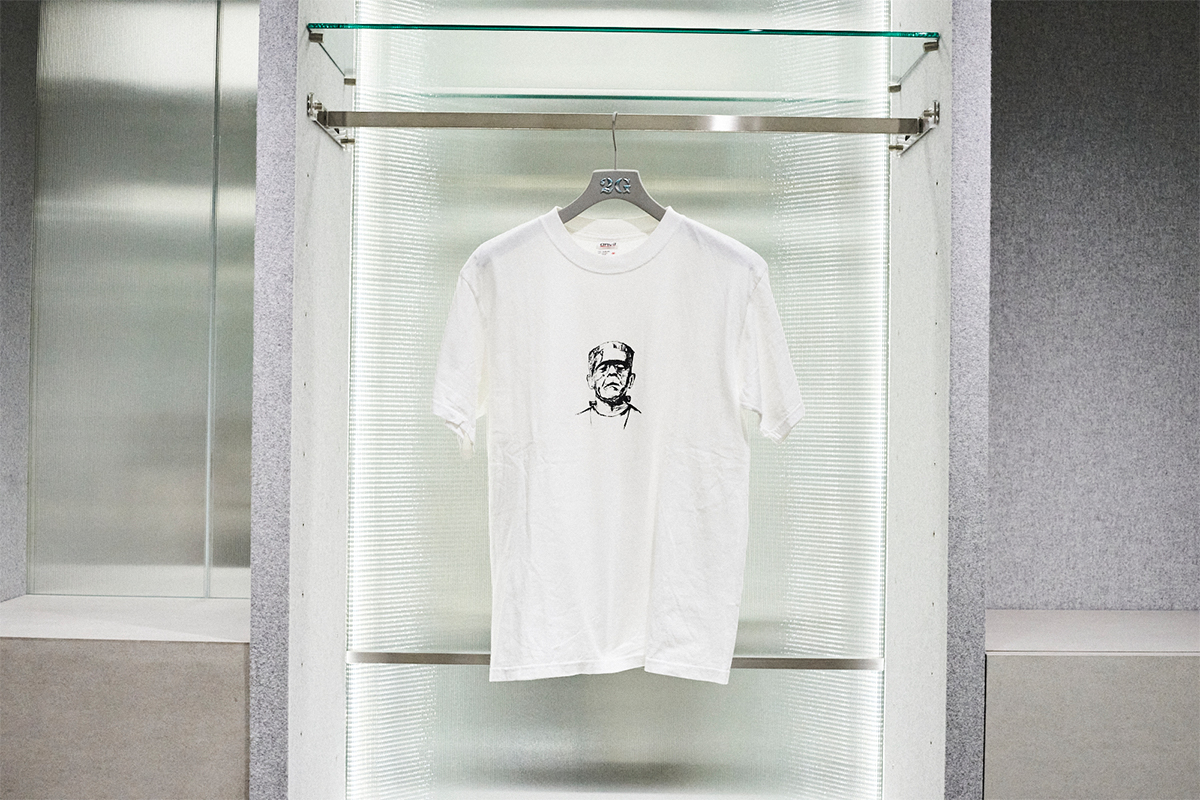
Hatanaka: “Kahimi Karie is pretty insane, right?”
Ikeda: “This is just really cool, y’know’
Hatanaka: “Because 2G is located in the Shibuya PARCO complex, I thought it would be good to have something Shibuya-like as well. This item is still totally wearable as far as designs goes as well”

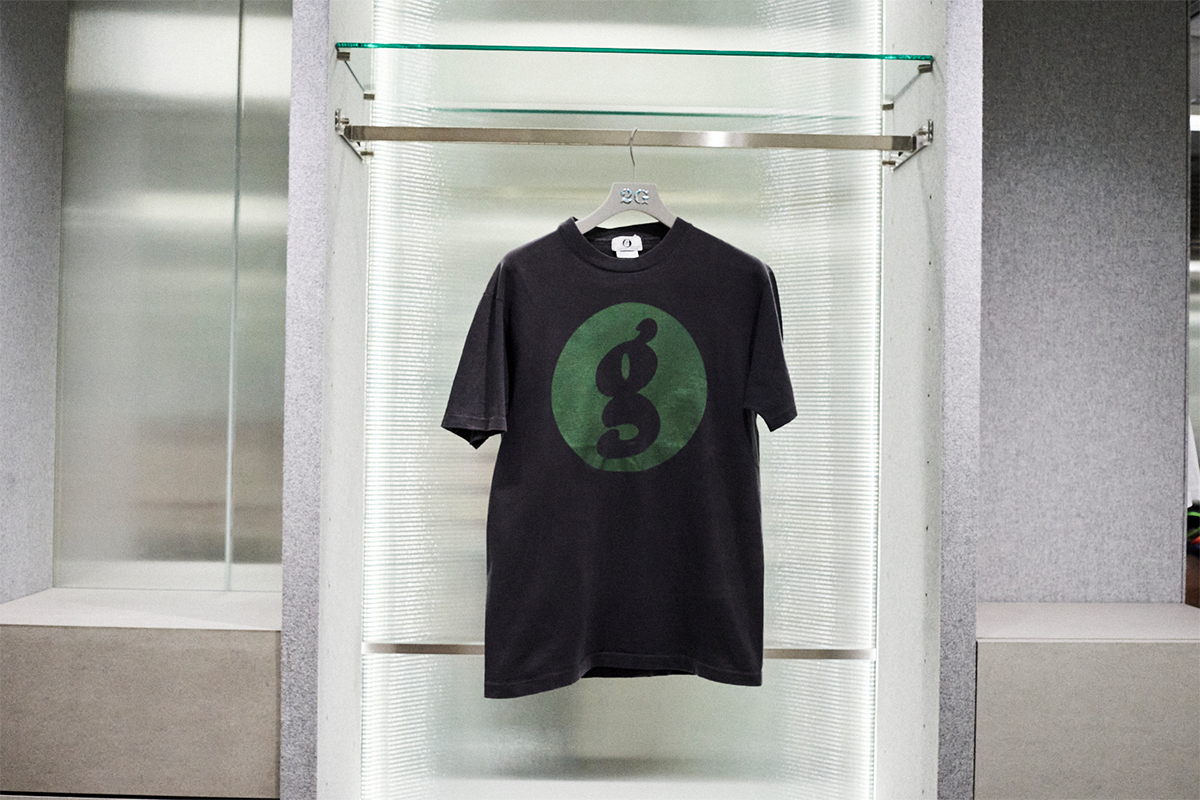
POGGY: “This is literally one of the T-shirts people are sharing on social media right now, isn’t it?”
Gonmori: “Yes, it is! The brand was started in 1990, and this GOOD ENOUGH item was released in 1991. All items from the ’90, ’91 era have a ‘Gram g’ tag, but the END RACISM 1991 collection that was aimed at making racism more known to the public has a special place for a lot of GOOD ENOUGH fans. The ‘Gram g’ logo ended up becoming the brand icon as well. It’s not an overstatement to say this item marks the start of street fashion here. This design has been revived as well, but I think this original piece has its own power expressed through the rough-edged letters of the words ‘SPECIAL EDITION 4’, the size of the print on the back and the difference in rubber dyes.”
--- This message of ‘End Racism’ is also really great, especially considering the actual situation.
Hatanaka: “The aura the original expresses is really quite something!”
Gonmori: “It’s even powerful just looking at it through a screen.”
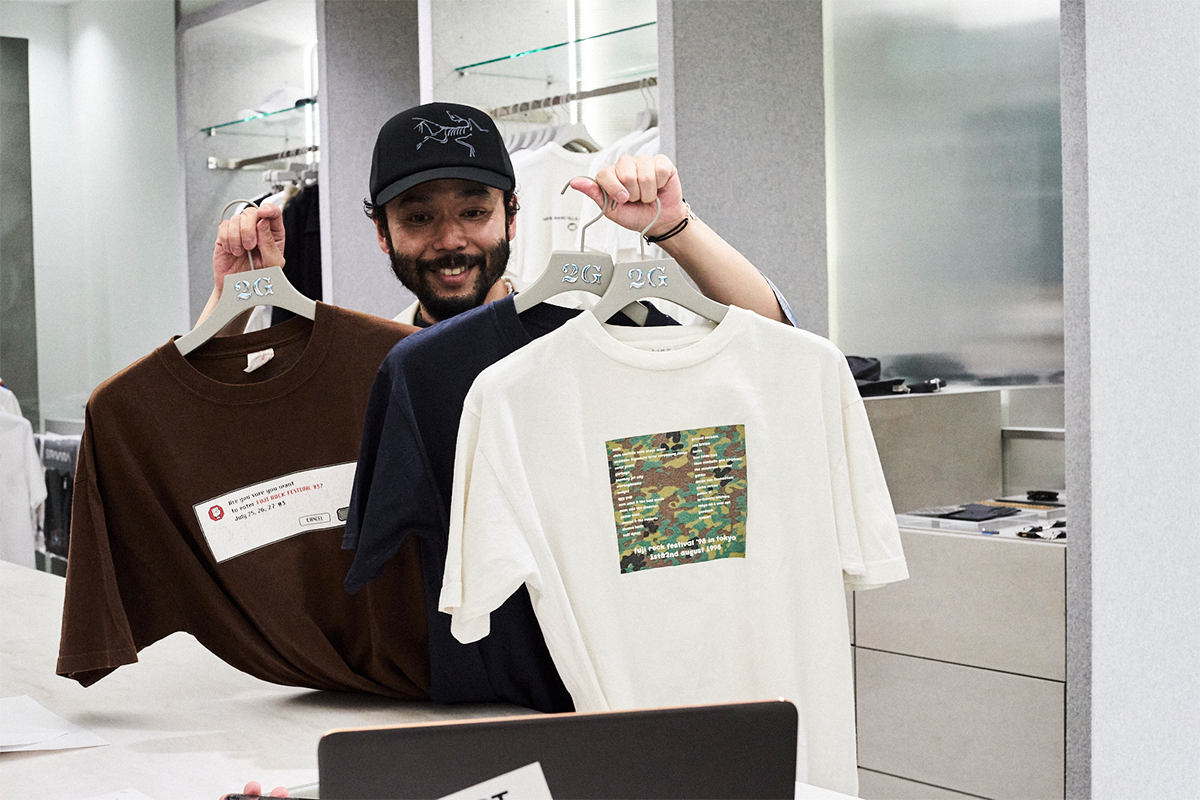
Hatanaka: “The T-shirts sold at FUJIROCK haven’t quite reached a fixed price when it comes to second-hand clothes, but there’s a lot of interesting items, especially from the early period. There’s a lot of items sampling on a level that might get some people angry. Almost all items are interesting until around 2003. I will definitely look into these a bit more again”
POGGY: “Also considering this line-up of bands which would be impossible these days, it’s a very interesting item for sure.”
Hatanaka: “Definitely! It expresses the feeling of those days very well”

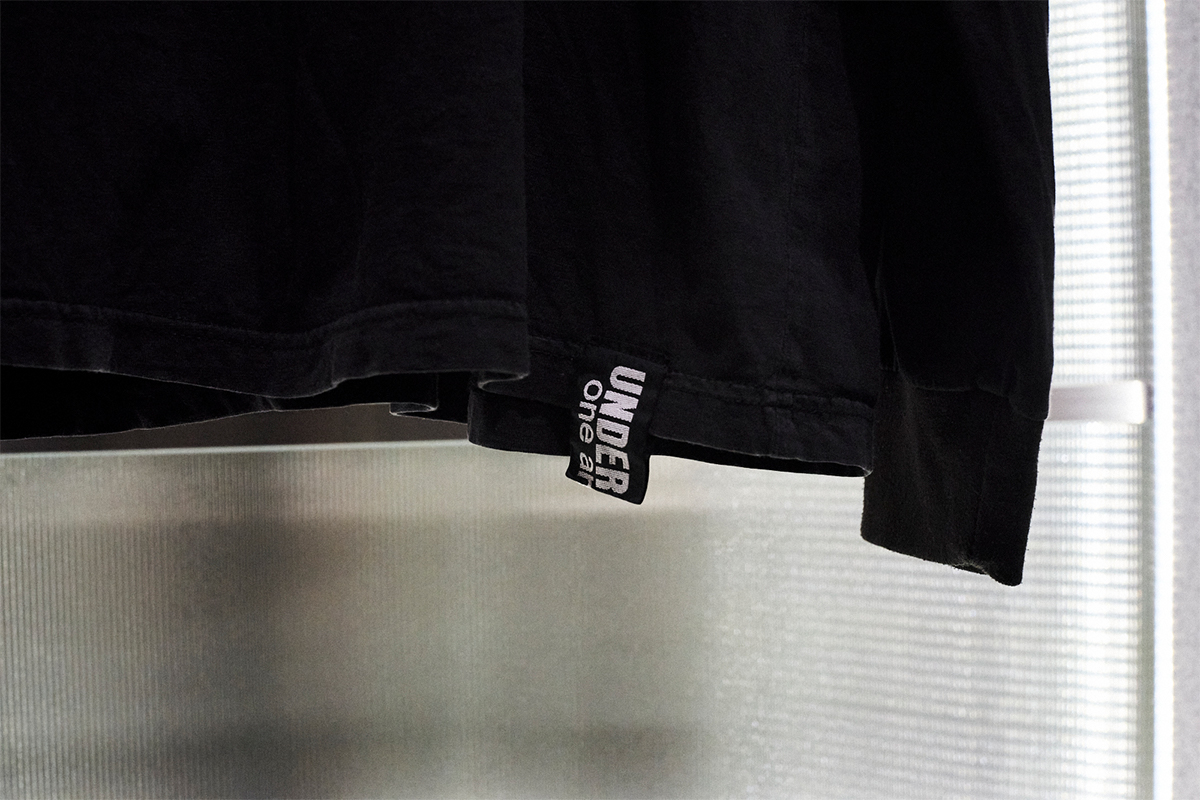
POGGY: “This is an item from the ONE AND ONLY label by UNDERCOVER, right?”
Gonmori: “ONE AND ONLY is a label that has only been produced on a limited base, including remakes. There’s a ONE AND ONLY tag on the sleeve, and there’s also a ribbed piece of different material used on the part connecting the body to the arm sleeve.”
Hatanaka: “You’re right, that’s amazing!”
Gonmori: “I hear it’s an item from the founding era of NOWHERE”
Hatanaka: “This is the first time I’ve actually seen it.”
Gonmori: “Oh, really?”
POGGY: “Seeing this U combined with underscore logo, it’s probably designed by Stash right? Or am I wrong here?”
Gonmori: “Hmm, I’m not actually sure.”
Hatanaka: "Talking about Stash, I have seen a design with an S combined with underscore before.”
POGGY: “Right? Either this was designed by Stash, or someone who was influenced by him. I’ll do some research. The design on the back is also something similar, right?”

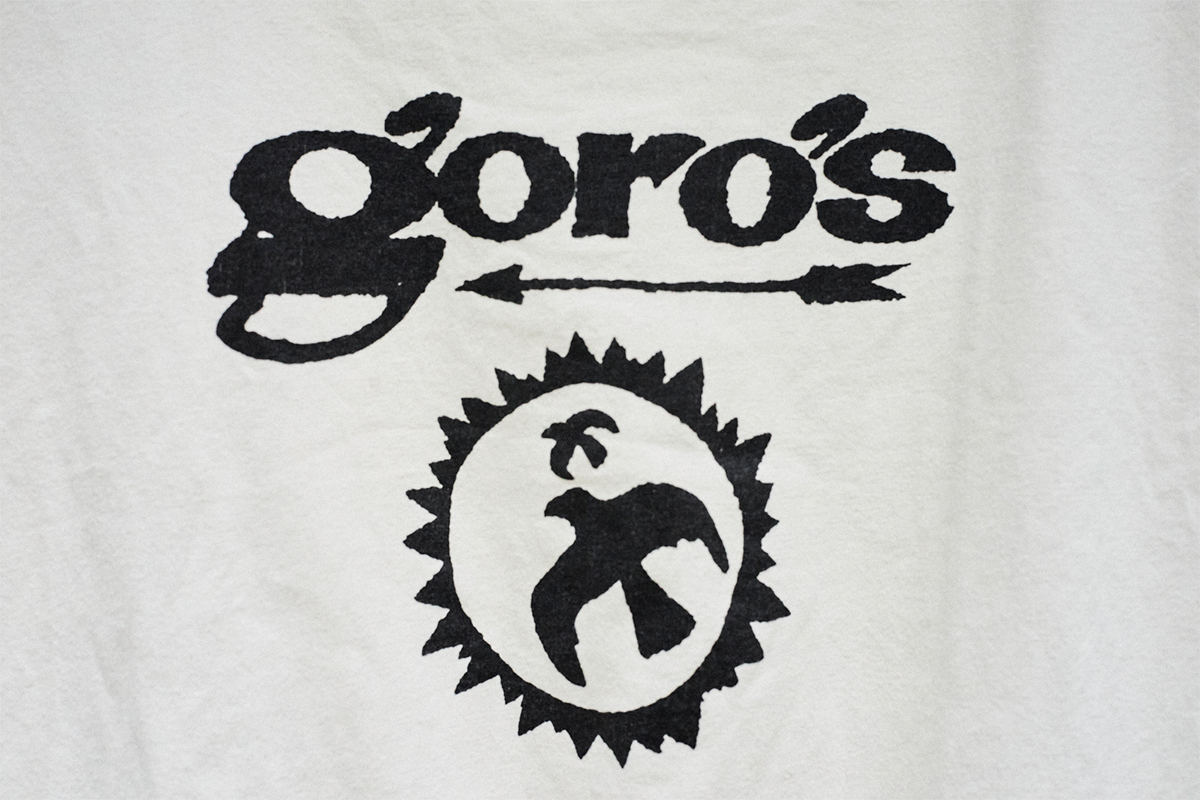
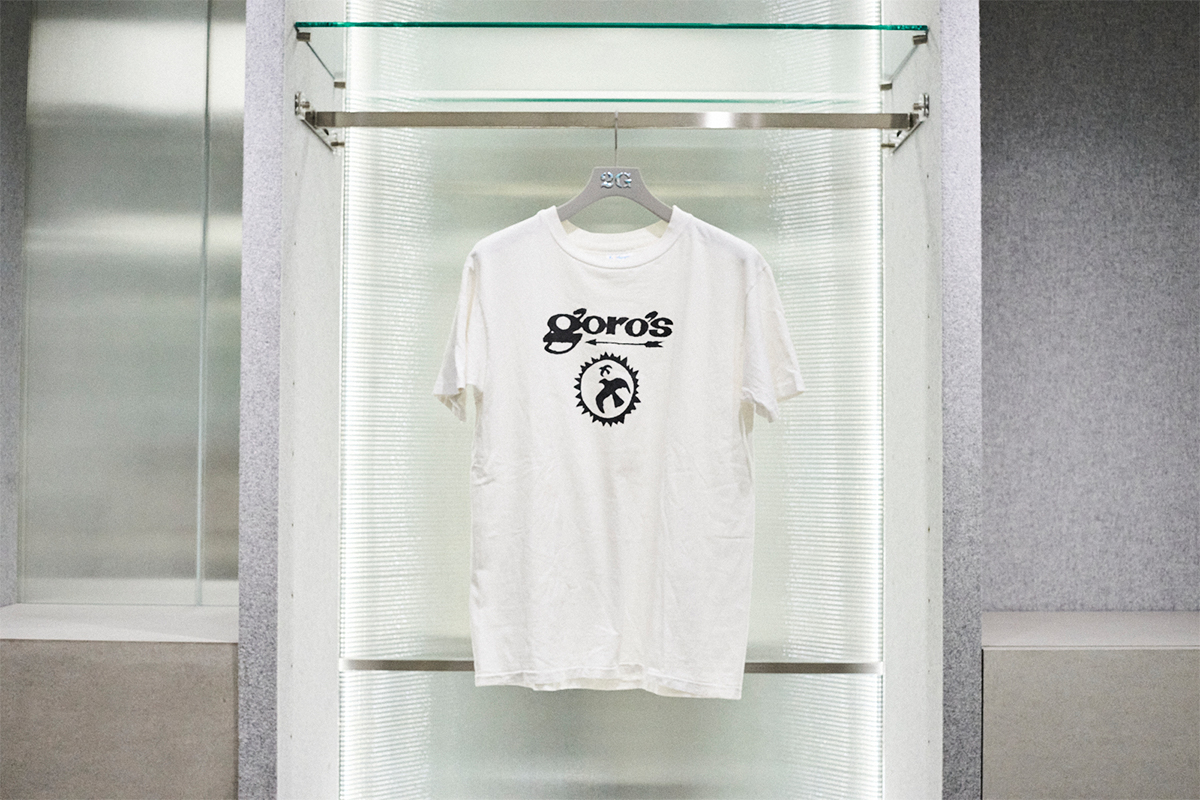

POGGY: “These are items by Gaboratory and Goro’s from the nineties, right?”
Ikeda: “This Goro’s item is pretty rare, especially because it’s a first edition”
POGGY: “I didn’t know there even was something like a first edition there!”
Hatanaka: “It seems like there’s several different versions. I think there’s a lot of fans for these items, but it’s really quite difficult to find any T-shirts.”
Ikeda: “The Goro’s item is from the early nineties and it seems to have been their first T-shirt. Gaboratory isn’t actually Japan in the strict sense of the word, though. It would’ve been great if we could have an item by Chrome Hearts as well.”
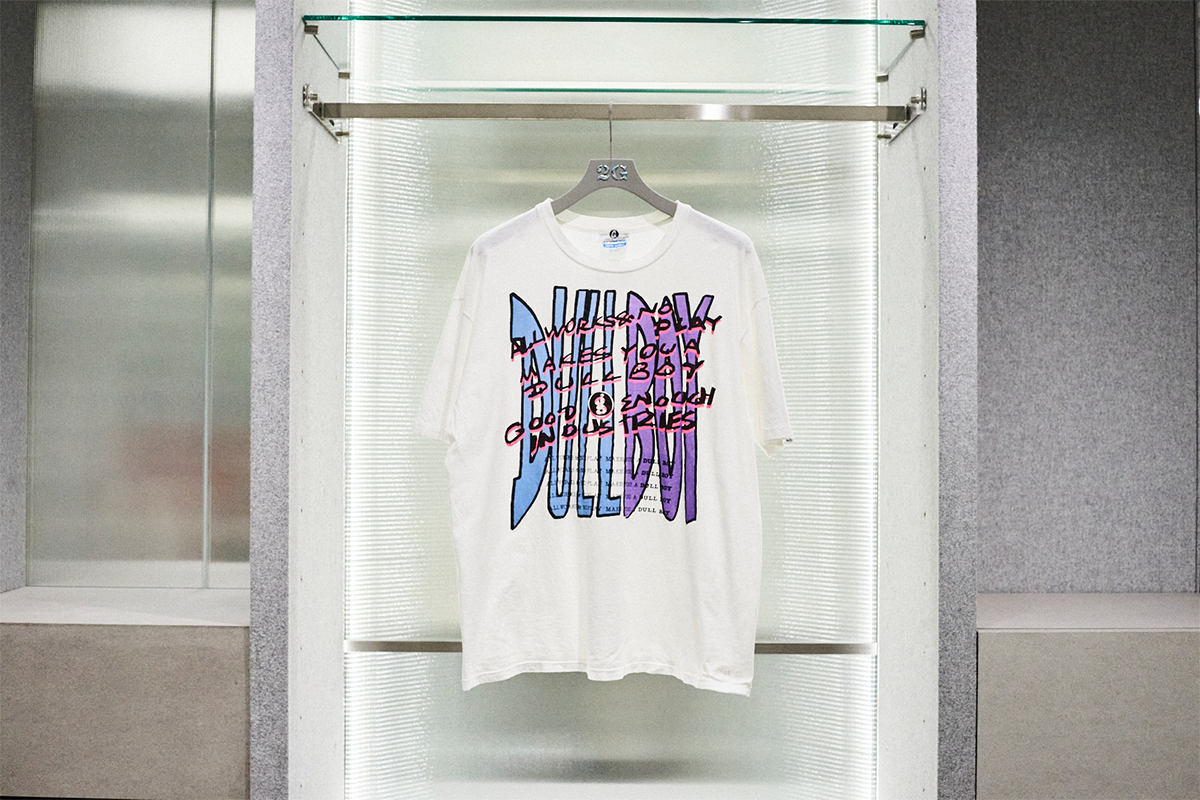
POGGY: “Is this a design by by SK8THING?”
Gonmori: “It is! I remember him wearing it before appearing in a magazine as well”
Hatanaka: “Yes, I remember that too!”
Gonmori: “Right!?”
Hatanaka: “He was wearing a cap that time, right?”
Gonmori: “Right? I’ve brought some T-shirts as well this time from the period around 1990, 1991, when he had only just gotten started and you don’t get to see that often. SK8THING as an artist keeps on evolving, he’s always running at the front lines, right? I think that even among all of his work, this is a piece that really exemplifies the beginning of the street culture here. This design combining hand-written graffiti with typography from the era that the PC had slowly started being used regularly. The print is using carefully selected dyes as well. As a whole, this piece proves that he’s a designer with an edge on the common man.”
POGGY: “SK8THING was also involved with a lot of other brand aside from GOOD ENOUGH at the very beginning, like APE and 40% (FOURTY PERCENT AGAINST RIGHTS).”
Gonmori: “Is that still the case these days?”
Poggy: “I’m not sure what it’s like now, but I hear many designs at those brands were made by SK8THING in his early period”
Gonmori: “Wow! Now that’s really something.”



POGGY: “I don’t think I’ve ever seen this item by MILKBOY before.”
Hatanaka: “This is one of my personal favorites. It was made as a part of the Urahara vibe, but it’s kind of an oddball.”
POGGY: “It was designed by someone there even before Hiroshi (Fujiwara), right?”
Hatanaka: “Yes, it was made by someone called Ookawa. There’s also a version with Jun Murakami, there’s those three versions.”
Gonmori: “Who’s the person on the right?”
Hatanaka: “On the left is Hikaru from BOUNTY HUNTER, and on the right is Hiroshi. It actually has HIROSHI PLAYING GUITER written on there.”
Ikeda: “That message is kind of amazing in itself!”
POGGY: “The picture itself was apparently taken by a professional, but it’s nice that as a whole it still has that rough feeling.”

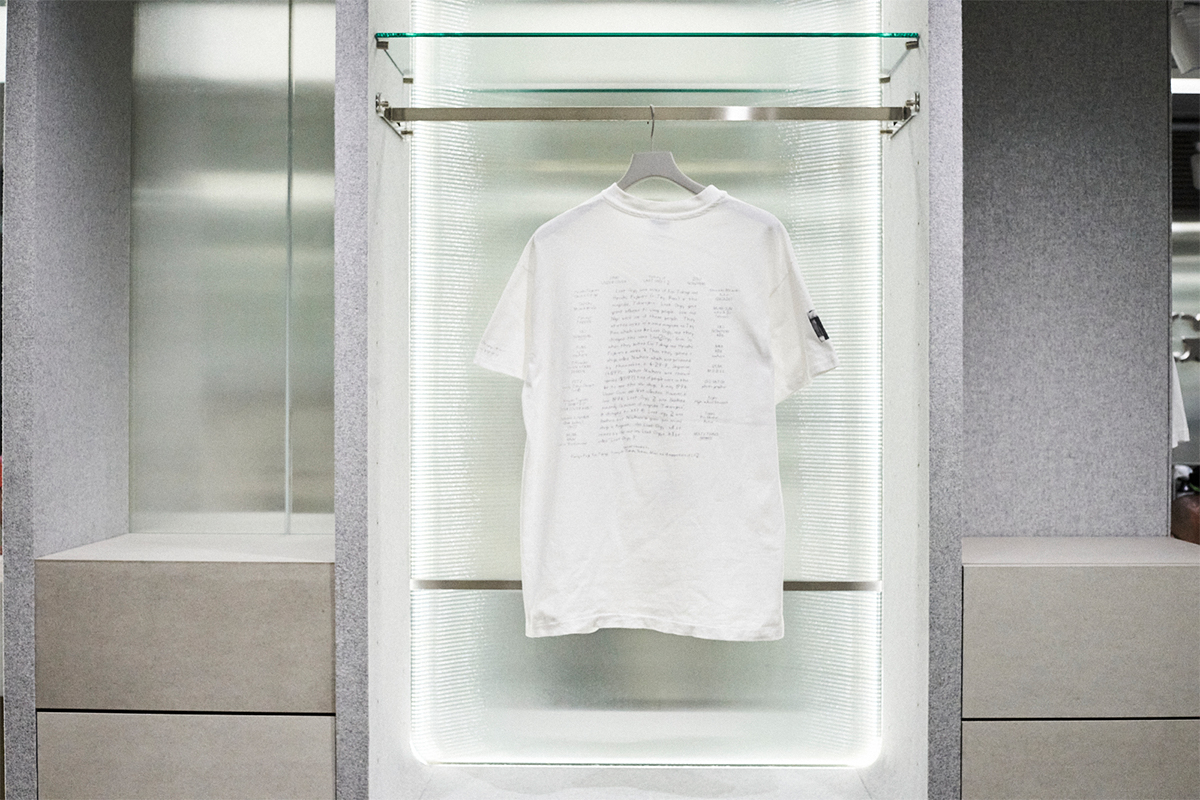
Gonmori: “I felt like I absolutely had to bring this one to this event; the T-shirt made to commemorate the last edition of LAST ORGY 2, published by Takarajimasha; this is a T-shirt that tells the history of street culture.”
POGGY: “Yes, everyone’s name has been included in there.”
Gonmori: “I get the feeling its expressing something about the whole of LAST ORGY. I’ve also written this on the survey, but perhaps because this is because NIGO had only just started APE together with SK8THING, he is still listed under NOWHERE. TETZ, known for W taps and FORTY PERCENT AGAINST RIGHTS is listed under Stussy Tokyo Chapt. Of course, the name of Fumiya Fujii is also on there. You can almost feel the breath of time. The design was done by SEVEN STARS DESIGN who started working on it from halfway through LAST ORGY 2, and I feel like it’s expressing really well the reality of street culture, being enjoyed together with friends. This is an unmissable piece for this collection.”
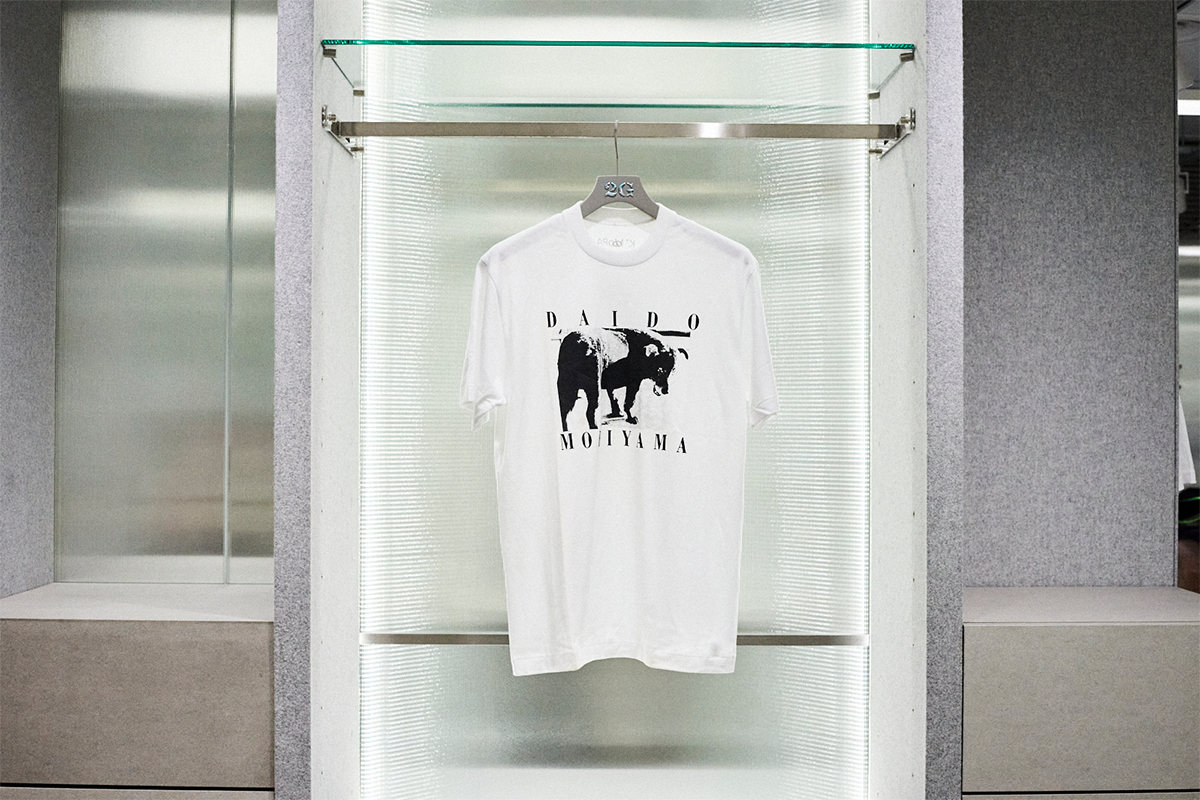

POGGY: “This is by Daido Moriyama, right?”
Ikeda: “Yes. I hear this T-shirt was made for an exhibition at a gallery in Yamanashi in 1997.”
Hatanaka: “You don’t see them that often, these T-shirts by Daido Moriyama”
Ikeda: “No, not at all. The tag is also kind of weird here.”
POGGY: “For Japanese T-shirts, there’s often a sticker on these indicating the size. Man, this is so interesting. To think this is only a small part of the products going on sale.”
All: “Man, this is going to be so much fun!”

--- So even for people at your level, this exhibition has some items that you rarely even get to see?
Hatanaka: “Definitely!”
POGGY: “I think there’s a lot of people out there looking for the GOOD ENOUGH ‘END RACISM’ T-shirt. Being able to spread their message through fashion is a really great thing.”
Hatanaka: “I remember there circulating a lot of fake items of this back in the day.”
POGGY: “I see! Do you all have any tricks to separate fake from real items?”
Hatanaka: “As for this, the size of the print is just completely different. For this specific T-shirt, the huge print is the real deal. Fake items often have smaller prints.”
POGGY: “It’s not completely the same as the story I just told you about the stores being attacked, but it’s not about buying these items as an investment just because they’re rare. In the first place it’s because people like the items, which just happen to be scarce in number, hard to find or perhaps high in price. I think in the end the most important thing is that actually liking an item is a prerequisite for buying it.”

--- Do you all have the feeling that Japan’s second-hand clothing is finally finding its way into the spotlight?
Ikeda: “I’m really starting to see it, yes. These Urahara items that Mr. Gonmori has been introducing to us, they’ve been influencing people like Virgil abroad as well, and I’ve also heard stories of a certain famous foreign rapper looking for archive items from BAPE.”
Hatanaka: “Also, when the people from SUPREME come to Japan, of course they visit a lot of second-hand clothing shops, but they also go to Jinbocho looking to buy old Japanese magazines. I get the feeling Japan was really a unique place in the eighties and nineties, looking at it from outside.”
POGGY: “There’s a lot of things stuffed in that era; graffiti culture, skateboard culture, bicycle culture, everything’s pressed together. This is also the period that items like T-shirts and sweaters became a definite part of fashion culture. It’s kind of like the definition of what fashion can be widened up in this area.”
--- Perhaps it’s because this kind of culture had only just found its way into Japan, but I really feel this initial impetus is really strong here.
POGGY: “That’s true. There’s a freedom here that’s only found in this period, which is also connected to the fact that you need to get a hold of copyrights to do things these days; there’s a really interesting feel to this period that comes from that freedom.”
Gonmori: “I’ve always thought that the Japanese were the first to actually fire up the vintage fashion market, but this project has made me realize the possibilities of ‘Japanese second-hand clothing’. This So cool Japan exhibition was organized with the intent of trying to get people, Japanese as well as people from across the world, to realize the true value of Japanese street fashion.”
Motofumi “POGGY” Kogi
Born in 1976. Started working part-time at UNITED ARROWS in 1997 and opened his own store, Liquor,woman&tears in 2006 after working for the press for a while. In 2010, he opened a new store called UNITED ARROWS & SONS, where he worked as director. In 2018 he went independent and is gathering attention for his various activities, like working as the fashion director for 2G, a store in the recently renewed Shibuya PARCO building.
Ken’ichi Gonmori
Ken’ichi Gonmori has a wide background rooted in vintage, various music styles like hip-hop as well as the Urahara Culture. He works as the director of BOW WOW while also being a supporting member of the new brand RECOGNIZE by King Of Diggin’, AKA MURO. BOW WOW’s main shop is called C30 and is located in Harajuku as a vintage shop; they just had their first anniversary recently. It has now started functioning as the main shop for RECOGNIZE as well.
Hitoshi Ikeda
Chairman of the nomadic second-hand clothing store, weber.
Kazuki Hatanaka
Advisor of the nomadic second-hand clothing store, weber.
Text_ Maruro Yamashita




